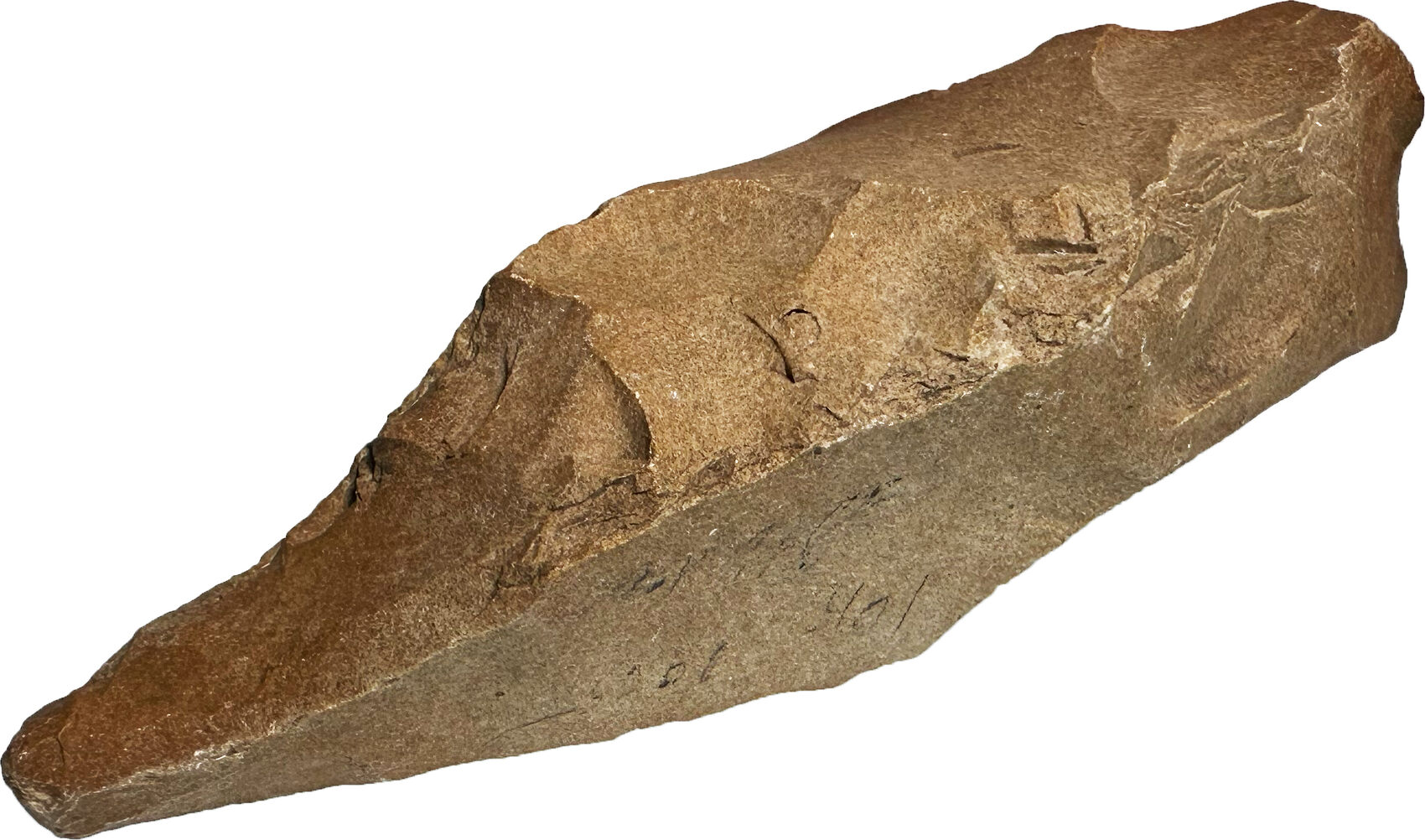Imagine unearthing a stone tool older than anything imaginable. That’s the power of a bifacial hand axe—a testament to our earliest ancestors’ ingenuity and skill. This isn’t just a history lesson; it’s a story of innovation and the tools that shaped early human life. We’ll explore their creation, global distribution, cultural significance, and enduring fascination, from classic teardrop shapes to less common varieties.
Mastering Stone: The Creation and Evolution of Hand Axes
Bifacial hand axes, meticulously shaped on both sides, represent a significant leap in early human technology. The most famous examples hail from the Acheulean period, but similar tools existed before and after. These weren’t simply rocks; they were the first truly advanced tools—a monumental achievement for humankind.
Crafting a Bifacial Hand Axe: Skill, Patience, and Precision
Creating a bifacial hand axe was a laborious process. Our ancestors carefully selected high-quality materials – flint, chert, quartzite, and sometimes obsidian – based on availability and desired properties. The knapping process involved striking the stone with another rock (percussion flaking) to remove large flakes, followed by more precise pressure flaking using bone or antler to refine the shape. This required immense skill, patience, and a keen understanding of stone fracture. Producing a single axe likely took hours, even days.
Diversity in Design: Exploring Hand Axe Variations
Bifacial hand axes weren’t monolithic; they exhibited remarkable diversity in shape and size. Common forms include ovate (teardrop-shaped), lanceolate (long and pointed), and orbiculate (nearly round). These variations likely reflect the materials available, intended use, and perhaps even regional stylistic preferences. For instance, a long, sharp lanceolate axe might have been ideal for hunting, while a heavier, ovate one might have served better for butchering or woodworking.
| Shape | Description | Possible Uses |
|---|---|---|
| Ovate | Teardrop-shaped, fairly symmetrical | Butchering, woodworking, general-purpose |
| Lanceolate | Long, pointed, slender | Hunting, digging, piercing |
| Orbiculate | Roughly circular or oval, less symmetrical | Possibly scraping, pounding, or other tasks |
The Global Reach of Hand Axes: Distribution and Cultural Significance
Remarkably, bifacial hand axes weren’t confined to a single region. Archaeologists have unearthed them across Africa, Europe, and Asia, demonstrating the widespread adoption and dissemination of this technology. This broad distribution speaks to the ingenuity of our ancestors and their ability to share knowledge across vast distances, suggesting sophisticated communication and cultural exchange.
A Long History: The Acheulean and Beyond
The Acheulean period, strongly associated with bifacial hand axes, spanned a vast timeframe, representing a significant portion of early human history.
| Period | Approximate Dates (Years Ago) | Associated Humans and Ancestors | Likely Activities |
|---|---|---|---|
| Early Acheulean | 1.76 million – 800,000 | Homo erectus | Basic butchering, simple tool use |
| Middle Acheulean | 800,000 – 300,000 | Homo heidelbergensis, Homo erectus | More refined toolmaking and hunting |
| Late Acheulean | 300,000 – 100,000 | Homo heidelbergensis, Archaic Homo sapiens | Increased complexity, specialized tools possible |
However, it’s crucial to remember that similar tools, possibly with differing functionalities, predate and postdate the Acheulean. Ongoing research continues to refine our understanding of the timeline and regional variations.
Unraveling the Mystery: The Uses of Bifacial Hand Axes
The precise functions of bifacial hand axes remain a subject of ongoing investigation. Microscopic analysis of wear patterns suggests uses for butchering animals, woodworking, digging, scraping hides, and potentially as weapons. Experimental archaeology, where researchers recreate and use hand axes, provides further insights. Some experts believe they may even have held symbolic significance, suggesting a more complex cultural role beyond purely utilitarian functions.
The Enduring Legacy: Hand Axes and Human Evolution
The bifacial hand axe is more than just a tool; it symbolizes a giant leap in human cognitive abilities and technological innovation. It represents a crucial stage in our evolutionary journey, highlighting the ingenuity and resourcefulness of our distant ancestors. Although more advanced techniques eventually emerged, the hand axe’s legacy endures, reminding us of our shared history and the continuous quest for knowledge. New discoveries consistently reshape our understanding, ensuring that the study of these remarkable artifacts remains a vibrant and evolving field.
Who Used Bifacial Hand Axes? [https://www.lolaapp.com/who-used-bifacial-hand-axes]
What is the Purpose of a Biface? [https://www.lolaapp.com/what-is-the-purpose-of-a-biface]
Did Vikings Use Hand Axes? [https://www.lolaapp.com/did-vikings-use-hand-axes]
- Charles Dickens’ Portsmouth Birthplace Museum: A Journey into the Life and Legacy of a Literary Giant - November 28, 2024
- Billy Goat Ebike Review: Specs, Performance, and Where to Buy - November 28, 2024
- Berwick-upon-Tweed Castle & Ramparts: A Journey Through History and Architecture - November 28, 2024
















